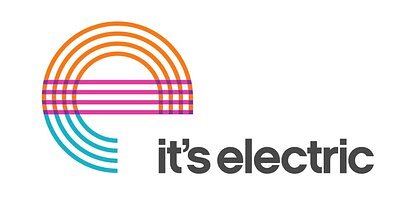
LA Leads EV Charging Revolution: New Curbside Network Tackles Key Adoption Hurdles
Los Angeles is deploying 90 new curbside EV chargers, featuring a novel detachable cable design to combat theft and expand access for urban residents without home charging. A look at how LA is pioneering equitable EV infrastructure.
LA Leads EV Charging Revolution: New Curbside Network Tackles Key Adoption Hurdles
By Kenneth Walker | November 12, 2025
Los Angeles is doubling down on its commitment to electric vehicle adoption with the launch of a groundbreaking curbside charging network. A partnership between the City of Los Angeles Department of Transportation (LADOT) and innovative charging provider it's electric will bring 90 new Level 2 charging ports to city streets over the next 12 months, beginning with a pilot launch in Koreatown. This initiative isn’t just about adding more charging stations; it addresses critical barriers to EV ownership, particularly for the millions of urban residents who lack access to dedicated home charging.
From Carshare to Public Access: A Model for Sustainable Infrastructure
The expansion cleverly repurposes existing infrastructure from the former BlueLA carshare network. Launched in 2018, BlueLA aimed to provide affordable electric vehicle access to underserved communities. While the carshare program proved successful, shifting priorities and the need for broader public access led to a collaboration with it's electric. “The conversion of the BlueLA network to fully public charging allows us to provide local charging to drivers where they already park,” explains a source within it's electric. This approach minimizes infrastructure costs and environmental impact compared to building entirely new stations.
This repurposing is strategically aligned with Los Angeles’ ambitious climate goals, aiming for 25% of vehicles to be zero-emission by 2025, 80% by 2035, and 100% by 2050. Achieving this requires a massive build-out of charging infrastructure, with estimates suggesting the need for over 21,500 public Level 2 chargers and 3,900 DC fast chargers by 2030. Curbside charging, like this new network, is seen as a crucial component in meeting this demand.
Tackling Theft and Reliability: The Detachable Cable Innovation
One of the most innovative aspects of this project is the implementation of a detachable cable design for the charging stations. Public EV chargers are frequently targeted by vandals and thieves, leading to costly repairs and service disruptions. “Cable theft and vandalism are a significant problem for public charging infrastructure,” notes an industry analyst. “It’s a constant battle to keep stations operational.”
By making the charging cables removable, it's electric significantly reduces the incentive for theft and simplifies maintenance. The design also future-proofs the stations, eliminating the need for adapters for different vehicle connector types. Each network user receives a complimentary cable, ensuring accessibility for all EV drivers. A source at LADOT highlighted the importance of this feature in maximizing uptime and ensuring a reliable charging experience for residents.
Koreatown: A Focus on Equitable Access
The initial phase of the project will see 15 charging stations deployed in Koreatown, a historically underserved community. This strategic focus directly addresses a critical gap in EV adoption – providing charging access to residents who lack off-street parking and cannot easily install home chargers.
“Access to convenient charging is the biggest hurdle for many urban dwellers considering an EV,” says a local community advocate. “This project is a step in the right direction, making EV ownership more accessible to a wider range of people.”
The Koreatown deployment aligns with Los Angeles’ Green New Deal, which prioritizes equitable access to sustainable transportation solutions. By focusing on disadvantaged communities, the city is ensuring that the benefits of the electric vehicle revolution are shared by all residents.
Beyond Los Angeles: A Scalable Model for the Future?
The success of this project in Los Angeles could pave the way for similar initiatives in other cities. The combination of repurposed infrastructure, innovative technology, and a focus on equitable access represents a scalable model for expanding EV charging networks nationwide.
Several cities are already exploring curbside charging options as a way to address the challenges of limited space and high installation costs. The detachable cable design, in particular, is gaining traction as a cost-effective solution for preventing theft and vandalism.
“We’re seeing a growing demand for innovative charging solutions that address the unique challenges of urban environments,” says an industry expert. “This project in Los Angeles is a good example of how cities can leverage technology and partnerships to accelerate EV adoption.”
However, challenges remain. Permitting processes, utility upgrades, and ongoing maintenance can all pose obstacles to widespread deployment. Effective collaboration between cities, utilities, and private companies will be crucial to overcoming these challenges and unlocking the full potential of curbside charging.
Looking Ahead
The launch of this new charging network in Los Angeles represents a significant step forward in the effort to accelerate the transition to electric vehicles. By addressing key barriers to adoption, prioritizing equitable access, and embracing innovative technology, the city is demonstrating leadership in the fight against climate change. As the electric vehicle revolution gains momentum, initiatives like this will be essential to ensuring that the benefits of clean transportation are shared by all.
📝 This article is still being updated
Are you a relevant expert who could contribute your opinion or insights to this article? We'd love to hear from you. We will give you full credit for your contribution.
Contribute Your Expertise →